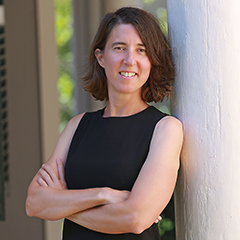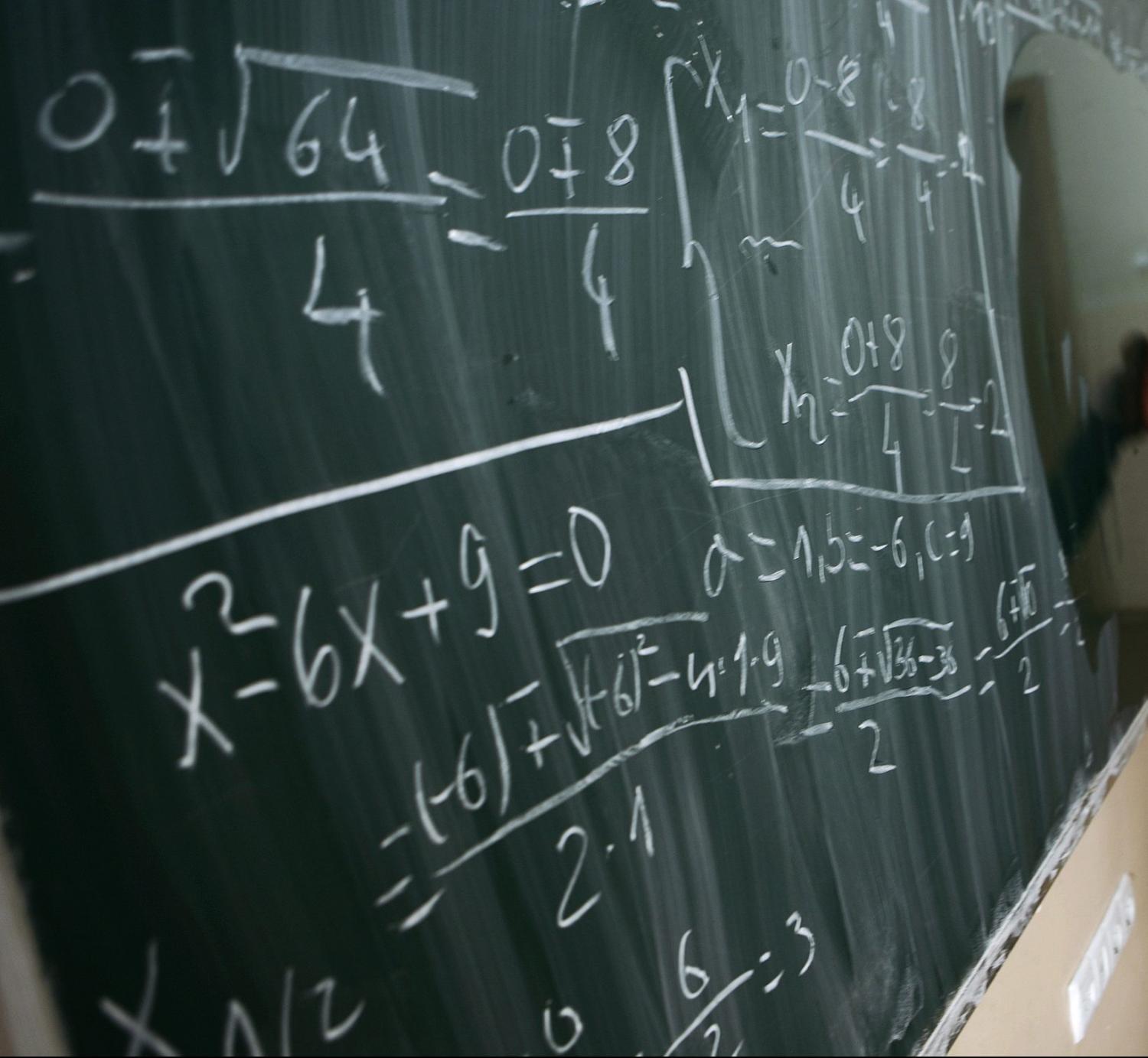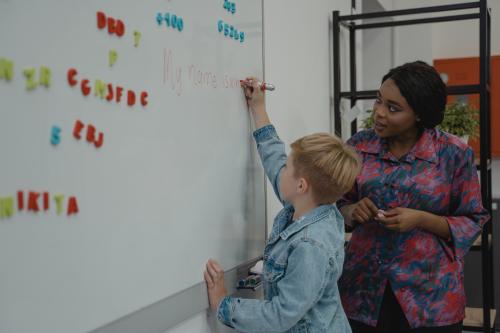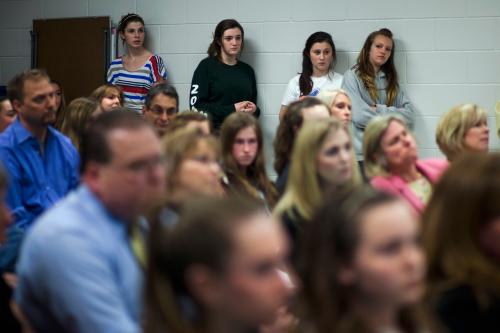Efforts to improve K-8 mathematics instruction have been a consistent feature of the education policy landscape for the past three decades, from the revised state mathematics standards of the 1990s to the Common Core educational standards enacted in 2010. These reforms ask teachers to forgo presenting mathematics as a set of facts and procedures and instead help students to make sense of mathematics conceptually, and also to engage students in mathematical practices such as explanation, argumentation, and modeling.
In response to these policies, governments at all levels have implemented supports intended to help teachers achieve standards-aligned instruction. These include new, standards-aligned curriculum materials as well as professional learning meant to improve teachers’ mathematical knowledge and teaching skills. A dense network of nonprofits that design and deliver these new materials and professional development have aided these government supports.
But have these efforts to bring standards-aligned instruction to mathematics classrooms succeeded? Three decades into these reforms, it is time to take stock. Over the past few years, colleagues and I have collected evidence on not only U.S. mathematics instruction, but also on the key pathways through which that instruction was expected to improve, looking for changes in teachers’ mathematical knowledge and to the curriculum materials they use.
Teachers’ mathematical knowledge has improved over time
Case studies conducted in the 1990s through the early 2000s identified teachers’ lack of conceptually focused mathematical knowledge as one reason why most taught mathematics as a set of facts and procedures. For example, teachers struggled to provide explanations for common mathematical procedures (e.g., “Why do we invert and multiply?”) and tended to organize their mathematical knowledge as discrete nuggets, rather than as big ideas connecting multiple terrains (e.g., knowing that re-expressing numbers in different forms is a critical step in operations with both whole numbers and fractions). As a result, reform efforts centered heavily on improving teacher knowledge–for instance, through federally funded professional development and district-designed offerings like Lesson Study.
To assess whether teachers’ mathematical knowledge changed over time, we compared results from surveys we fielded with middle school teachers in 2005 and in 2016. Both surveys captured teachers’ mathematical knowledge for teaching (MKT). Although these surveys used two separate samples, both were designed to be nationally representative and thus allowed comparisons in teacher MKT over time.
We found that, by 2016, middle school teachers’ MKT had increased an amount equal to the average teacher in the 2005 sample improving 5 percentile points in that distribution. However, MKT improvements appeared concentrated among early-career teachers. Teachers hired over the roughly 2008-2015 period had MKT scores well above teachers hired during the 1998-2005 period. This suggests the MKT improvements that we observed resulted more from changes in the labor market or pre-service preparation than the professional development efforts described above. Further, although MKT gaps between teachers serving the most- and least-affluent students remained large in 2016, those gaps had shrunk by about 25% from 2005. Together with other evidence indicating relative stability in teacher preparation offerings—and still other evidence that the quality of the teaching labor force improves during periods of recession—we surmise that the patterns we observed likely resulted from schools hiring more able teachers after the 2008 recession since they had the ability to be more selective due to fewer vacancies.
Uptick in use of standards-aligned curriculum materials
This same pair of surveys tracked teachers’ use of standards-aligned curriculum materials. Overall, we found a modest movement toward these materials: Among teachers reporting that they did use a textbook in 2016, 19% used at least one standards-based textbook. In comparison, 8% of teachers in the mid-2000s reported using a standards-based textbook. However, we also observed that one in five 2016 teachers reported never using a textbook, nearly double our estimate from 2005. Teachers in 2016 frequently reported using a variety of self- and colleague-developed materials, as well as materials from websites like Teachers Pay Teachers and Pinterest.
Mathematics instruction itself is also modestly improving, under the right conditions
We measured instructional quality in two different studies using a common observation instrument, the Mathematical Quality of Instruction (MQI), which is designed to capture reform-aligned instruction.
The first study focused on upper-elementary classrooms during the years 2010-2013. After using the MQI to score 1,735 recorded lessons from 329 teachers in five U.S. urban districts, we concluded that teachers in this sample do use reform-aligned instructional practices, but typically use them within the confines of traditional lesson formats. For instance, even the most standards-aligned instruction we observed, which featured numerous instances of student mathematical reasoning and a substantial focus on sense-making, typically proceeded in a teacher-directed format with little student discussion or inquiry. More typical instruction in the dataset featured fewer opportunities for student reasoning, and only occasional moments of mathematical sense-making. Instruction appeared stronger in two districts that had aligned their professional development, curriculum materials, and messages from leadership to support standards-based instruction.
The second (forthcoming) study focused on middle school mathematics instruction in the year 2016. In it, we recorded one class from 98 teachers from across the country. Though our response rate was low (22%), this study did have the advantage of comparing instruction in 2016 to the 83 mathematics videos in our 1999 study on TIMSS—the Trends in International Mathematics and Science Study—which we obtained and scored using the MQI. Overall, we observed modestly more standards-aligned practices in 2016; though again, case studies suggested that even the most standards-aligned instruction typically occurred in a teacher-directed format. Teachers, for instance, asked students to provide brief explanations or engage in a challenging contextual problem for a moment or two. Importantly, we observed stronger lesson quality when teachers reported using a textbook than when they reported that the lesson they taught came from elsewhere.
Half full or half empty? Making sense of incremental gains
To mathematics educators who have been in this business since the 1990s, as I have, these results are cause for both hope and dismay. Hope because modest movement toward standards-aligned instruction did appear. Hope also because this movement appeared where expected: in districts that aligned professional development, curriculum materials, and messages from leadership over long periods of time to create conditions under which their teachers could learn. Dismay because these changes appeared quite modest, both against a baseline of reformers’ expectations and against classroom data collected in 1999. Evidence also suggests only small improvements in teachers’ mathematical knowledge and limited take-up of standards-aligned curriculum materials.
Why not more change? One view is that teachers may be more amenable to incremental rather than wholesale changes in practice, preferring to retain control over the core tasks of delivering and explaining mathematical content. A related view, described in David Cohen’s 2012 book, “Teaching and its Predicaments,” explains instructional stasis by noting: weak personal incentives for teachers to pursue more rigorous student work; fragmented, conflicting and sometimes constraining instructional guidance; and scarce infrastructure for building teachers’ knowledge and skill in key practices.
Such a system is not impossible, but it is improbable in the hustle and bustle of constant reforms and intense demands on teachers’ time. Reformers might think about taking an improvement approach that puts these systemic elements in place quickly, but then pushes slowly, year over year, toward improving typical teachers’ mathematics instruction. Evidence of the durability of traditional practice in our studies suggests such an approach may be the most viable in the long run.
The Brookings Institution is committed to quality, independence, and impact.
We are supported by a diverse array of funders. In line with our values and policies, each Brookings publication represents the sole views of its author(s).








